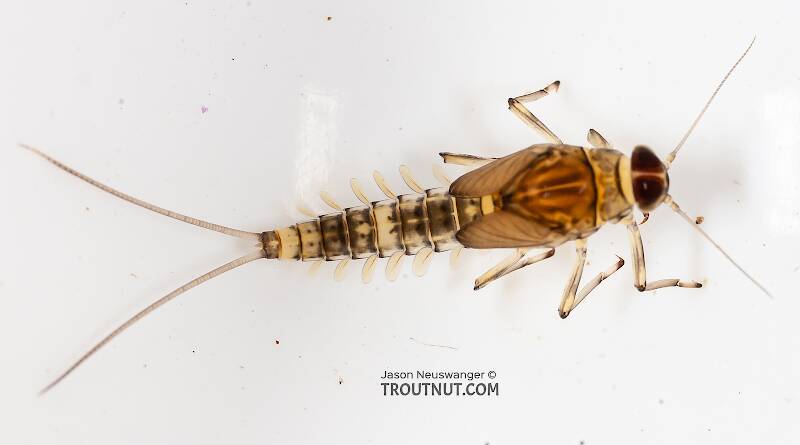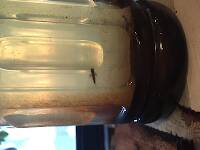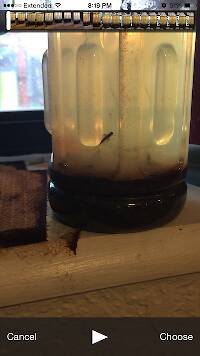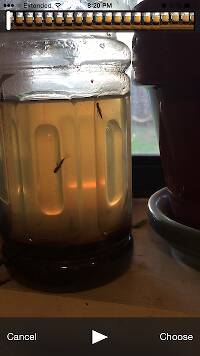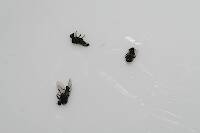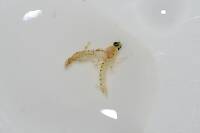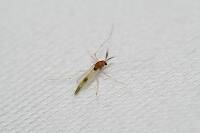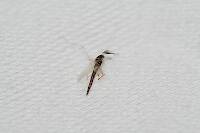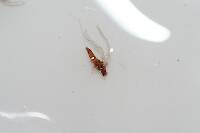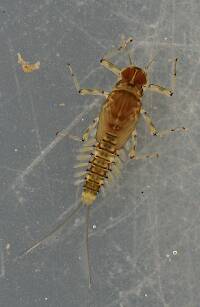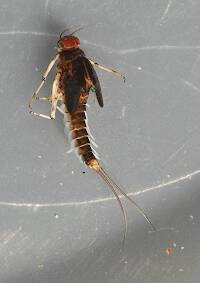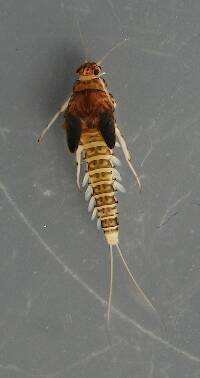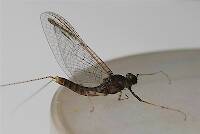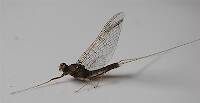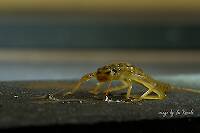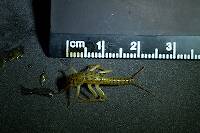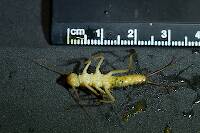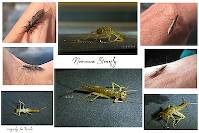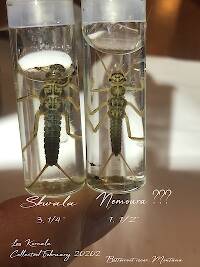
Blue-winged Olives
Baetis
Tiny Baetis mayflies are perhaps the most commonly encountered and imitated by anglers on all American trout streams due to their great abundance, widespread distribution, and trout-friendly emergence habits.
Featured on the forum

Some characteristics from the microscope images for the tentative species id: The postero-lateral projections are found only on segment 9, not segment 8. Based on the key in Jacobus et al. (2014), it appears to key to Neoleptophlebia adoptiva or Neoleptophlebia heteronea, same as this specimen with pretty different abdominal markings. However, distinguishing between those calls for comparing the lengths of the second and third segment of the labial palp, and this one (like the other one) only seems to have two segments. So I'm stuck on them both. It's likely that the fact that they're immature nymphs stymies identification in some important way.

Troutnut is a project started in 2003 by salmonid ecologist Jason "Troutnut" Neuswanger to help anglers and
fly tyers unabashedly embrace the entomological side of the sport. Learn more about Troutnut or
support the project for an enhanced experience here.
GONZO on Jul 20, 2011July 20th, 2011, 8:41 pm EDT
Unless the setae are long (about 0.60-0.75 X the width of femur), Jason, that would seem to bring us (me) back to A. feropagus/lapponica or perhaps B. foemina. (See above.)
Konchu on Jul 21, 2011July 21st, 2011, 3:45 am EDT
foemina should have larger hind wing pads than the acentrella twins. feropagus has shorter setae on the hind margin of the femur than lapponica
Entoman on Jul 21, 2011July 21st, 2011, 8:27 am EDT
Hope that gets us somewhere.
Yes, back to nowhere. :)
"It's not that I find fishing so important, it's just that I find all other endeavors of Man equally unimportant... And not nearly as much fun!" Robert Traver, Anatomy of a Fisherman
GONZO on Jul 21, 2011July 21st, 2011, 8:38 am EDT
Stay tuned, Kurt. There just may be some light at the end of the taxonomic tunnel....
Entoman on Jul 21, 2011July 21st, 2011, 9:07 am EDT
Ha! Will do. BTW - those wingpads sure look light for a nymph as close to eclosion as the specimens eye development suggests.
"It's not that I find fishing so important, it's just that I find all other endeavors of Man equally unimportant... And not nearly as much fun!" Robert Traver, Anatomy of a Fisherman
Quick Reply
Related Discussions
Topic
Replies
Last Reply
Re: Best of the Forum--Most Useful and Informative Bug Threads Featured Topic
In General Discussion by Martinlf
In General Discussion by Martinlf
17
Feb 26, 2016
by Crepuscular
by Crepuscular
9
Jun 13, 2008
by Wiflyfisher
by Wiflyfisher
2
Feb 24, 2020
by Leskorcala
by Leskorcala


